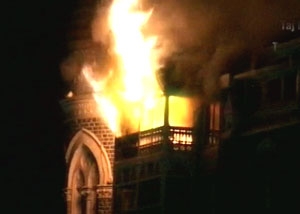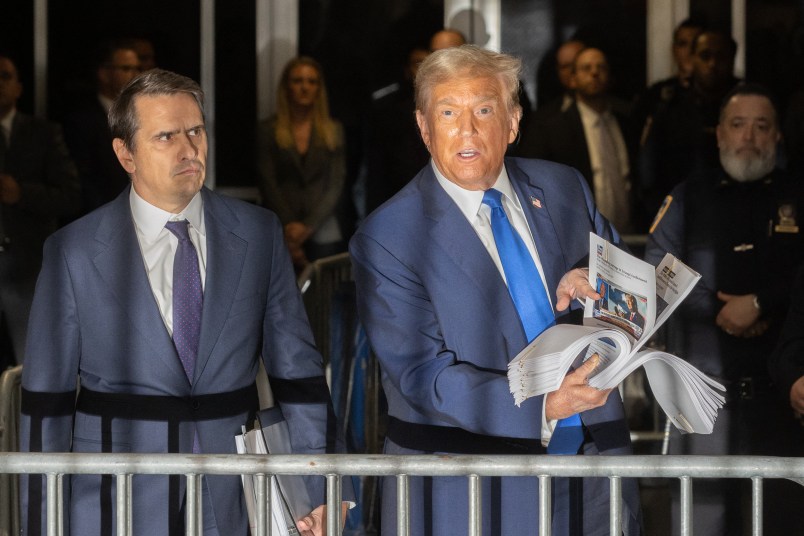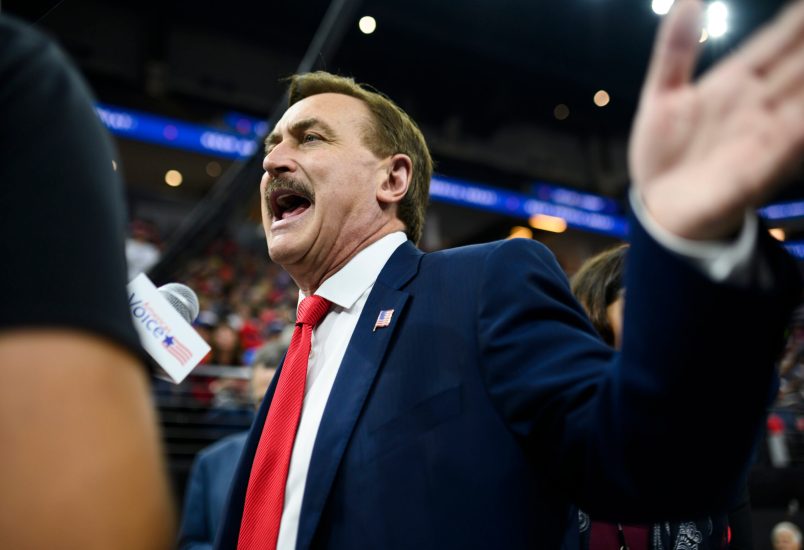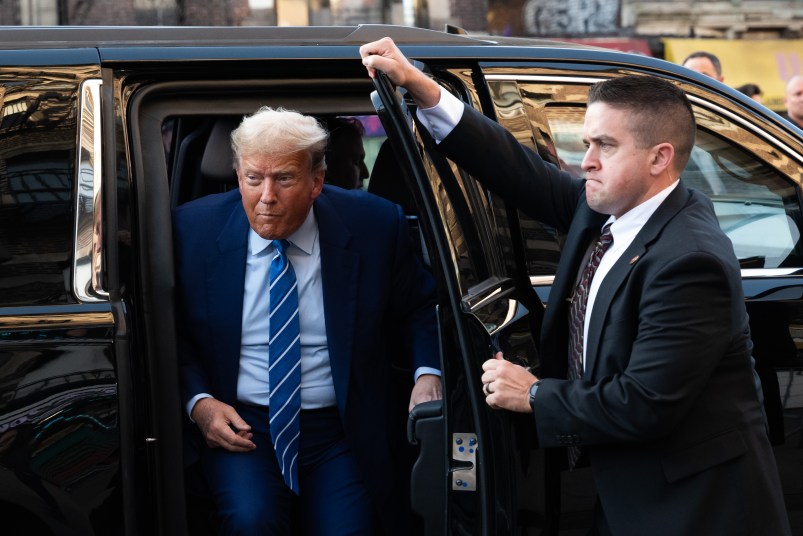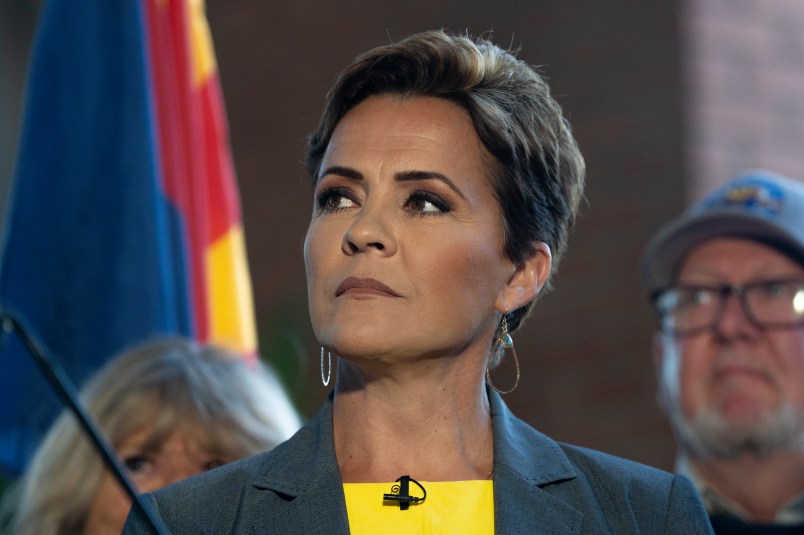[Continued from here]
The Aftermath
The three-day siege of Mumbai triggered international outrage.
The United Nations put Lashkar chiefs on a blacklist. Pakistan detained Hafiz Saeed, the group’s founder, for another in a series of short-lived house arrests. U.S. diplomats worked to prevent India from military retaliation. Western authorities scrambled to reassess the threat from Lashkar.
Although the recorded conversations between handlers and gunmen were broadcast worldwide, Mir did not appear concerned that the notoriety would expose him to arrest. During a visit to Headley’s home, he looked tired but was boastful and talkative.
“Sajid made me hear the audios of the Mumbai attack,” Headley recalled. “Sajid played…the Mumbai video where along with others Sajid was instructing the attackers from the Karachi control room. I heard Sajid’s voice and he was instructing the attacker in the Chabad House to kill the women.”
Mir and Headley were already at work on their next target: a Danish newspaper that in 2005 had published cartoons of the Prophet Muhammad. The planning had begun before Mumbai, at a crucial meeting in November 2008. After maintaining a careful distance from each other for almost two years, Headley’s handlers from the ISI and Lashkar, Mir and Major Iqbal, paid him a joint visit in Lahore, the report says.
“This is the first time Major Iqbal and Sajid came together to my home,” the American said. “We discussed about the Denmark project.”
Mir directed and funded Headley’s subsequent reconnaissance on the newspaper’s offices in Denmark, according to the report and U.S. court papers. Major Iqbal’s previously undisclosed involvement in the high-stakes meeting to launch an attack in the heart of Europe is a “pretty seismic” revelation, said Sajjan Gohel of the Asia-Pacific Foundation, a London-based security consulting firm.
“They take it to the next phase,” Gohel said. “Either the hierarchy was aware or there was no accountability.”
Experts say Iqbal’s visit alongside Mir sent a message of trust to Headley. But the extent to which the major approved of the Danish plot, and the degree to which he was acting on his own, remain unclear.
“I think this was a particularly sensitive discussion, and somebody above Iqbal’s pay-grade told him to sit in and be present for the conversation between Headley and Mir,” said Faddis, the CIA counter-terror veteran.
Indian anti-terror officials think the ISI gave the operation its blessing, even if it did not participate directly. There is no record that Pakistani intelligence ever warned Denmark about Headley or the plot.
Mir gave Headley a thumb drive with information about Denmark and the Jyllands Posten newspaper, according to U.S. court documents and officials. They christened the new plot “The Mickey Mouse Project.”
In December, Headley suggested killing only the cartoonist and an editor. Mir disagreed. Despite the uproar over Mumbai, he seemed eager to take an audacious terrorism campaign into Europe, according to documents and investigators.
“All Danes are responsible,” Mir declared, according to U.S. officials and documents.
Across the ocean, the FBI was pursuing yet another tip about Headley. A friend of Headley’s mother in Philadelphia had come forward after seeing news about the Mumbai attacks. She told agents that she believed Headley had been fighting alongside Pakistani militants for years. Agents conducted an inquiry in December but then put it on hold because they thought Headley was out of the country, U.S. officials said.
Weeks later, Headley traveled from Chicago to Denmark. Using his business cover again, he visited the newspaper’s offices in Copenhagen and Aarhus and inquired about advertising his immigration firm. He shot video of the area and – because Mir mistakenly believed the editor was Jewish – of a nearby synagogue. He took careful notes, just as he had done when scouting in Mumbai, according to U.S. court documents.
But a few weeks later, Mir put the Denmark operation on hold. Pakistani authorities had finally arrested a big fish: Lakhvi, Lashkar’s military chief. The ISI also arrested Abu Al Qama, a Lashkar boss who had allegedly worked the phones with Mir at the command post for the Mumbai attacks, along with some low-level henchmen.
The ISI Reacts
The way the ISI handled the arrests deepens the mystery and ambiguity surrounding its role in the Mumbai case.
The agency held Lakhvi in a safe house for some time before putting him in jail, according to investigators. And Headley said Gen. Ahmed Suja Pasha, the ISI’s director general, met with Lakhvi after he was jailed.
“Pasha had visited him to understand the Mumbai attack conspiracy,” the report quotes Headley as saying, without further elaboration.
Pakistani officials deny that Pasha, one of the most powerful men in Pakistan, made the jailhouse visit. U.S. and Indian officials and experts are more willing to believe the story. Headley’s language suggests that Pasha, who had become director only two months before Mumbai, was surprised by the attack or at least by its dimensions. This reinforces the U.S. view that top ISI brass weren’t involved in the plot.
Indian officials disagree. They believe Pasha visited the jailed Lashkar chief to ensure his silence and obedience.
“I think Pasha was aware of the plot beforehand, or he is not chief of the ISI,” the Indian counter-terror official said.
Meanwhile, Major Iqbal cut off contact with Headley and told him to get rid of compromising evidence, according to U.S. court documents and investigators. The ISI handler said, “the Mumbai investigation was getting bigger and hotter,” and a suspect had revealed “ISI cooperation” in the plot, the Indian interrogation report says.
But Headley did not sever all his links to the ISI. He remained in touch with Ali, the ISI major who had first recruited him, until June 2009, even during trips back to the United States, he said.
As for Mir, he stayed cool. Despite the evidence implicating him in the attacks, he visited Lakhvi, his Lashkar boss, in jail, according to the Indian interrogation report. If true, this reinforces suspicions that Mir was either an ISI officer or had powerful protectors, investigators say.
Headley’s Final Months
Despite Lashkar’s decision to hold off, Headley remained fixated on the plot against the Danish newspaper. In the spring of 2009, he gravitated increasingly toward al-Qaeda, according to U.S. and Indian court documents.
Lashkar veterans who had defected to al-Qaeda connected him with al-Qaeda’s chief of operations, Ilyas Kashmiri. At a sit-down in May, the veteran Pakistani militant offered to provide Headley with operatives in Europe for the attack. Kashmiri envisioned them decapitating hostages and throwing heads out of the newspaper office windows, U.S. court documents say.
In August Headley returned to Denmark for more reconnaissance. He also went to Britain and Sweden to discuss the newspaper plot with Kashmiri’s operatives, according to U.S. and Indian documents.
Despite occasional tensions, Headley stayed in touch with Mir. They discussed new reconnaissance in India as well as personal matters. The American asked about Mir’s baby son, referring to the boy in e-mails as “polar cub.” Headley also urged Mir to return to the Denmark plot, according to U.S. documents and officials.
In an e-mail, Headley described his trip to Copenhagen. He jokingly complimented Mir about his “music videos” – code for a TV program about Mumbai that had featured Mir’s voice directing the attacks.
With affectionate exasperation, Mir warned his operative to be careful, according to documents and officials.
“Your skin is dear to me, more than my own,” Mir wrote.
In September 2009, documents show that Headley again discussed joining forces with Mir for the Denmark attack, a sign that Mir was still operating freely. But Headley’s luck was running out. His contact with two known al-Qaeda suspects in the English town of Derby had put him on the radar of British intelligence, who alerted their U.S. counterparts. In October, the FBI arrested Headley in Chicago, where he had moved his Pakistani wife and children.
The FBI had been investigating Mumbai since a team rushed there right after the attacks. FBI leads- phone analysis, forensics, money trails – had been instrumental in the Indian and Pakistani investigations.
Now Headley gave U.S. agents a treasure trove of evidence and intelligence. He quickly confessed and spent days describing his exploits, according to U.S. officials.
In March he pleaded guilty to helping organize the Mumbai attacks and the Denmark plot. As part of the plea deal to avoid the death penalty, he agreed to cooperate. Officials say his confession and the contents of his computer showed he had scouted scores of targets, including American ones, around the world. They say he did not do reconnaissance in the United States, but they noted a chilling detail: His immigration consulting firm had offices in the Empire State Building.
Headley helped investigators overcome a basic problem. American agencies lacked data on Lashkar: photo books, organizational charts, profiles.
“The intelligence was very thin before Mumbai,” said Ackerman, whose House Foreign Affairs subcommittee held hearings on Lashkar last year.
Faddis contends the intelligence community did not dedicate enough resources to Lashkar.
“It’s a classic problem in the U.S. intelligence community: failing to anticipate new threats and focusing completely on the one that already hit us,” he said.
A U.S. counter-terrorism official disagreed, saying: “It’s simply wrong to suggest that we’ve underestimated [Lashkar].”
It seems clear, however, that the government did underestimate Headley. A recent review by the director of national intelligence found that U.S. agencies had received six warnings about Headley from his wives and associates from October 2001 to December 2008. Yet federal agents didn’t place him on a terrorist watch list or open a full investigation until July 2009, eight months after the Mumbai attacks.
Between June 3 and June 9, investigators with India’s National Investigation Agency questioned Headley for 34 hours in Chicago in the presence of U.S. prosecutors, FBI agents and his lawyers. Headley’s account, contained in the interrogation report obtained by ProPublica, opened a rare door into a secretive underworld of spies and militants.
A Pakistani official said the Indian version was “totally distorted and fabricated.”
“There was no involvement of the ISI whatsoever,” the official said. “Nor did any serving official interact with Headley or any of the perpetrators.”
But U.S. investigators say much of Headley’s account is credible and essentially repeats his account in the federal case in Chicago. The investigators believe Major Iqbal was a serving member of the ISI and that several other officers also had contact with Headley.
FBI agents and their Indian counterparts have spent more than a year checking Headley’s story against other evidence: witness testimony, phone and e-mail intercepts, travel and credit card records.
“Most of the Headley statement is consistent with what we know about the ISI and its operations,” the Indian counter-terrorism official said. “And it’s consistent with what he told the FBI and what they told us.”
Physical evidence backs up Headley’s confession. The FBI identified a phone number that investigators believe connects the American, Mir and ISI officers. Headley called Pakistani officers at that number. It was also called by an accused ISI spy who went on the secret mission with Mir in India in 2005, investigators say.
The Quest for Justice
The Mumbai case could put Washington and Islamabad on a collision course.
Attorney General Eric H. Holder Jr. has vowed to prosecute the killings of the six Americans as required by law. The prosecutions for the Mumbai and Denmark plots are being led by Patrick J. Fitzgerald, the U.S. Attorney in Chicago. The trial of Headley’s Chicago-based associate, who is charged with providing the immigration consulting firm as a cover for reconnaissance, is set for May.
But at least half a dozen suspected masterminds of the Mumbai attacks are still at large. It’s unlikely Pakistan would extradite any suspects to the United States, officials say. And Pakistani courts tend not to convict accused radical Islamists.
The Pakistani government denies any official link to the 2008 attacks.
“Why should there have been involvement of the Pakistani government in the Mumbai attacks at a time when Pakistan and India were dealing seriously with issues between them?” said the senior Pakistani official. “The Mumbai incident provided a pretext for India to shy away from settling the contentious issues between the two countries.”
The question of Pakistani government involvement drives a high-stakes debate about whether the ISI participates in terrorist activity.
“For the first time you have an American talking about this agency not just being aware of, but involved in, a terrorist plot,” said Gohel, the London security consultant. “What have the last nine years since 9/11 been about? And all the money from the U.S. taxpayers to fund and stabilize Pakistan? Is that money being used for terrorism?”
Some Western anti-terrorism officials think that, at most, Pakistani intelligence officers provided limited state support for the Mumbai attacks. A senior U.S. counterterrorism official believes a few mid-level Pakistani officials had an inkling of the plot but that its dimensions surprised them. U.S. intelligence officials do not see evidence that ISI chiefs made an “institutional, top-down decision” to attack Mumbai, another U.S. official said. Some feel that Headley’s nuanced narrative tends to exonerate the top spymasters.
“We should not assume that simply because the ISI policy is to sustain Lashkar that the leadership is aware of every detail in terms of the group’s operations,” said Tankel, the author of the forthcoming book on Lashkar. “The ISI policy is not to allow Lashkar to cross certain red lines, but sometimes the interpretation by ISI handlers of what constitutes an acceptable operation is different than that of the leadership.”
There is also speculation that the government of President Asif Ali Zardari may have been a secondary target of the Mumbai plotters, because of his overtures to India and his opposition to extremism.
“Perhaps it was done by people who didn’t like the way the ISI and the army were moving, particularly in Kashmir,” a European official said. “Maybe it was a rogue operation destabilizing the Pakistanis as well as the Indians.”
In contrast, other Western and Indian anti-terrorism officials cite the in-depth scouting, amphibious landing and sophisticated communications as signs of Pakistan’s involvement. They say Lashkar’s history and Headley’s disclosures about its relationship with the ISI make it hard to believe that Pakistani military leaders weren’t aware of the plan.
Indian leaders go as far as accusing the ISI of planning and executing the attacks alongside Lashkar.
“It was not just a peripheral role,” Indian Home Secretary G.K. Pillai said publicly in July. “They were literally controlling and coordinating it from the beginning till the end.”
Pakistani leaders deny the allegations and say they have gotten tougher on Lashkar, freezing its assets and appointing an administrator at its headquarters.
“The government is working to prevent the preaching of extremism, bring them into the mainstream and implement curriculum changes,” the senior Pakistani official said.
Critics call the crackdown largely symbolic, however. It remains to be seen whether Mir, Major Iqbal and other suspected plotters will ever be arrested or successfully prosecuted. An Indian court convicted the lone surviving gunman in June. But the Pakistani trial of the Lashkar military chief and six lower-level suspects seems hopelessly stalled. U.S. officials say.
Meanwhile, the Lashkar camps are still training aspiring fighters, the senior U.S. counterterrorism official said recently. Pakistani leaders seem reluctant to confront the group and risk backlash from its trained fighters and the vast support base it has built through its charities and social programs.
Lashkar’s professionalism, global networks and increasing focus on Western targets have made it one of the most dangerous forces in terrorism, many investigators say.
“The American side is telling us that Lashkar is as much of a threat as al-Qaeda or the Taliban,” the senior Pakistani official said.
Recent warnings of Mumbai-style plots by al-Qaeda in Europe reflect Lashkar’s influence in the convergence of militant groups that a British official calls “the jihadist soup in Pakistan.” The arrest last month in Copenhagen of suspects accused of plotting a hostage-taking attack on the Danish newspaper has suspected links to Kashmiri, the al-Qaeda operations chief. The foiled attack may have been an attempt to unleash the plan developed by Headley, Western counter-terror officials say.
Tensions between Washington and Islamabad worsened in December, when the CIA abruptly withdrew its station chief from Pakistan after his identity was made public in a lawsuit there. U.S. officials suspect that the ISI leaked the station chief’s name, possibly as “tit-for-tat” after the ISI and its chiefs were named as plaintiffs in a recent civil lawsuit filed in New York by relatives of victims of the Mumbai attacks, a U.S. official said.
More than two years after Mumbai, the families of the victims are still waiting for authorities to keep their promises of justice.
“We are not going to give up,” said Moshe Holtzberg, a brother of the slain rabbi. “The families want to see full justice being done for all those organizations and individuals involved in the Mumbai attacks.”





